IAC News
IAC News No.105, July 1 2021
Japan Society of Civil Engineers International Activities Center July 1, 2021 IAC News No.105
“Proposals for Changes for the Expansion of Infrastructure Overseas”
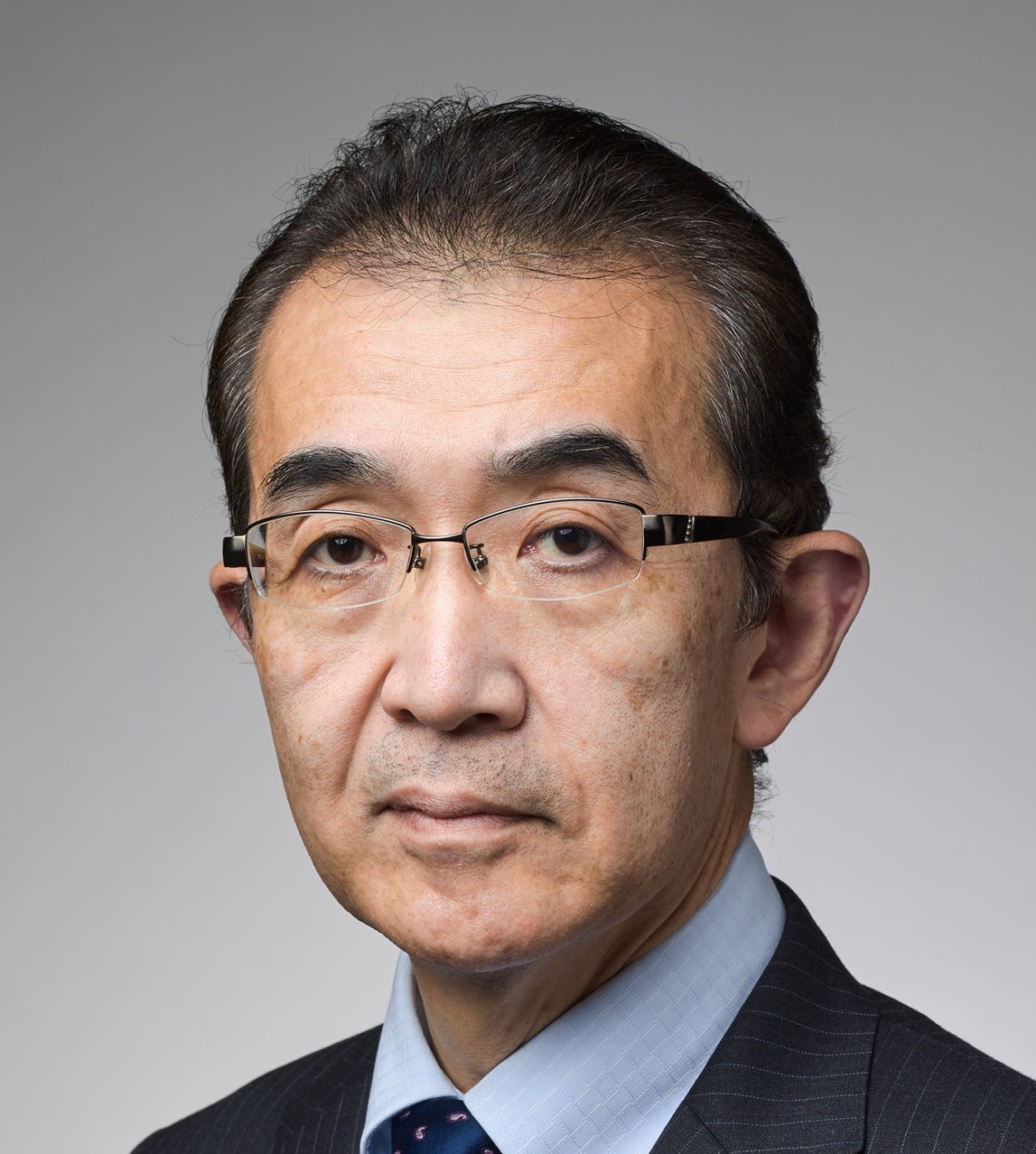
Hideyuki Sakunaka
(Secretary-General, the Consideration Committee on Changes for the Future Expansion of Infrastructure Overseas)
On May 28, 2021, the Japan Society of Civil Engineers published a “statement” as “Proposals for Changes for the Expansion of Infrastructure Overseas” and held an online symposium (359 viewers). The aforementioned statement is a summary of the outcomes of considerations to date by the “Consideration Committee on Changes for the Future Expansion of Infrastructure Overseas” (established in June 2020, Chairperson Masafumi Mori, Secretary-General Hideyuki Sakunaka).
“For Japan’s infrastructure-related industry, expanding its business opportunities overseas is an extremely important issue not only for ensuring the future of the industry but also for Japan’s national interests. And in order to promote overseas expansion, Japan’s infrastructure-related industry should demonstrate its ‘strengths’ and ‘originality’, and at the same time, it must correctly recognize its own ‘weaknesses’ and ‘change’ itself so that it can play an active role in various forms of business and the rat race of international business.” Based on this awareness of the issues, the Consideration Committee has examined the problems, issues, measures, visions, etc. that Japan’s infrastructure-related businesses and organizations should be aware of in order to play a major part on the global stage.
At the online symposium, after opening remarks by Hitoshi Ieda, President of the Japan Society of Civil Engineers, and Assistant Vice-Minister for Engineering Affairs Kunihiro Yamada, a guest from MLIT, Dr. Mori, Chairperson of the Consideration Committee, and Mr. Sakunaka, Secretary-General of the Consideration Committee, explained the contents of the statement.
Although a long time has passed since the Japanese government called for the expansion of infrastructure overseas, Japanese infrastructure-related industry has not dramatically increased its advance into overseas markets during this period. The average overseas order ratio of Japanese companies is only about 4%. It is important for many people, including small and medium-sized companies with technological capabilities, to actively take on the challenge of engaging in business overseas. For this purpose, we will look to establish “Quality Infrastructure” as a brand associated with Japanese companies, and everyone involved will take pride in maintaining the good name of the brand. We will boldly take on the challenge of engaging in overseas business and infrastructure investment to broaden the scope of Japanese companies. Japanese companies need to secure and develop new human resources and perhaps change their corporate culture. Japanese companies should make requests to the government and government agencies on equal footing, and the government and government agencies should mobilize all possible measures to support them. It was said during the online symposium that putting these ideas into practice will lead to changes in the expansion of infrastructure overseas in the future. Next, as an open discussion, Yusuke Amano, Director of the Japan International Cooperation Agency, Katsuhito Miyake, Managing Director of The Overseas Construction Association of Japan, Inc., and Eiji Yonezawa, Vice-Chairman of Engineering and Consulting Firms Association, Japan, offered up their thoughts. This was followed by an online Q&A session and those watching the event also expressed their opinions. After Chairperson Mori gave a summary of the event’s proceedings, the symposium was brought to a close with a speech by Masayasu Kayano, Chief Director of the International Affairs Division of the Japan Society of Civil Engineers.
The statement (http://www.jsce.or.jp/strategy/index.shtml) and a live video recording of the symposium (https://committees.jsce.or.jp/2020_Presidential_Project03/node/8) are available to download on the Japan Society of Civil Engineers website.
【Reported by Hideyuki Sakunaka, Secretary-General,
the Consideration Committee on Changes for the Future Expansion of Infrastructure Overseas】
Project on Strengthening Resilience in Cyclone Idai Affected Area
Recovery of African Cities from Cyclone Damage
- Efforts made in the COVID-19 Pandemic -
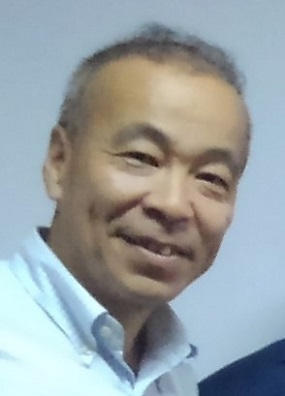
Atsutoshi Hirabayashi
(Technical Advisor, Japan International Cooperation Agency (JICA))
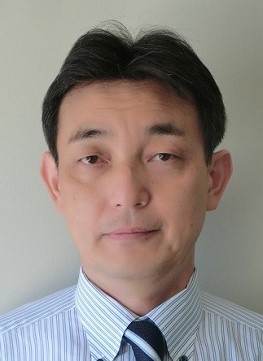
Masaaki Chida
(The Project Manager of the JICA Team, Project on Strengthening Resilience in Cyclone Idai Affected Areas)
■ Introduction
Tropical Cyclone Idai landed in central Mozambique on the night of March 2019 and caused severe damage with 650 deaths and 400,000 people displaced.
Especially, Beira City in Sofala Province was one of the most devastated regions with many public facilities, such as schools and hospitals being damaged.
In response to this circumstances, the Government of Mozambique has requested to the Government of Japan for the cooperation for recovery and reconstruction of the city from disaster and creating a resilient society, and JICA has been continuing the cooperation through the project since September 2019.
■ Project Outline
○ Project Objective
Project aims to develop action plans for reconstruction efforts in response to Cyclone Idai disasters and conduct execution assistance, contributing to the promotion of smooth rehabilitation projects and the formation of a disaster - resilient society.
○ Project Outcome
1.Disaster risk assessment and hazard map creation
2.Prepare Beira Municipality recovery action plan based on hazard map
■ Achievement so far
○ Minimize Cyclone Damage Afterward
On December 30th of 2020, Cyclone Chalane hit the north of Beira city caused severe damage. However, the mayor of Beira City in Mozambique stated, "When Cyclone Idai occurred on March 14, 2019 and caused extensive damage, we were confused because we did not know what actions to take in advance. This time, thanks to JICA, we were able to evacuate the area smoothly in advance and minimize the damage. I am also impressed by JICA's remote implementation of the project under the limiting conditions caused by the COVID-19 pandemic," expressing his gratitude for Japan's cooperation.
○ Official Handover of the Hazard Map
On May 10th of 2021, JICA officially handed over the Hazard Map to Beira city and the designated authorities with the presence of the Mozambican Government, Beira Municipality, the Embassy of Japan in Mozambique and number of related institutions.
The hazard map was formulated for the areas which are at high risk of floods and high tides caused by cyclones or heavy rains, and places where population and assets are concentrated. The hazard map was shared to and highly evaluated by other donors such as the World Bank and is utilized for their disaster resilience projects in Beria, too. It is expected that the knowledge gained through the hazard map formulation for Beira City will be disseminated to other regions, under the leadership of GREPOC (Post Cyclone Reconstruction Cabinet in Mozambique), and will be utilized for developing and planning for a city more resilient to natural disasters across the country.
■ Continuing Activities during the COVID-19 Situation
Renovation work of the public facilities damaged by the Cyclone Idai is being implemented at five sites in Beira city. Despite the severe situations caused by COVID-19 where people cannot travel freely, the project team members are managing the work from Tokyo and Maputo by making the most of IT and digital technologies.
One of them is the 360-degree-pictures that are stored in a cloud server. This system enables Japanese and Mozambican engineers to check the current and past site situation as if they were standing on the site.Currently, JICA project team can only travel to Maputo and cannot go to Beira city. However, the project team is doing all possible measures to support the recovery process of Beira city by connecting Tokyo, Maputo and Beira online. Activities conducted through online communication not only include the above-mentioned rehabilitation of public facilities but also include evacuation planning activities, pilot project for disaster-resilient fish market in Praira-Nova area in Beira and so on. These activities are managed in cooperation with the counterpart including government institutions in Maputo and Beira and other organizations.
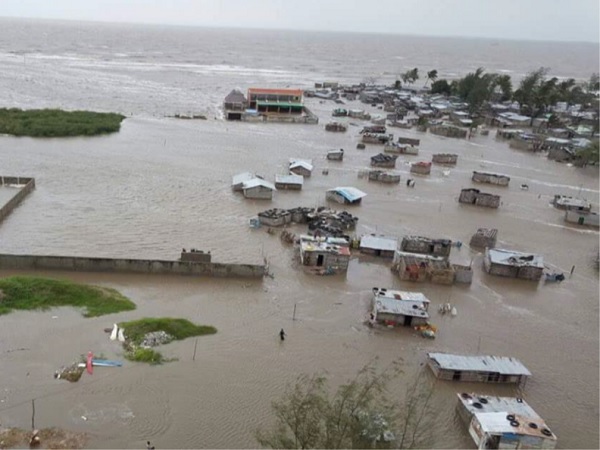
Flooded Coastal Area of Beira City hit by Cyclone Idai, March 2019
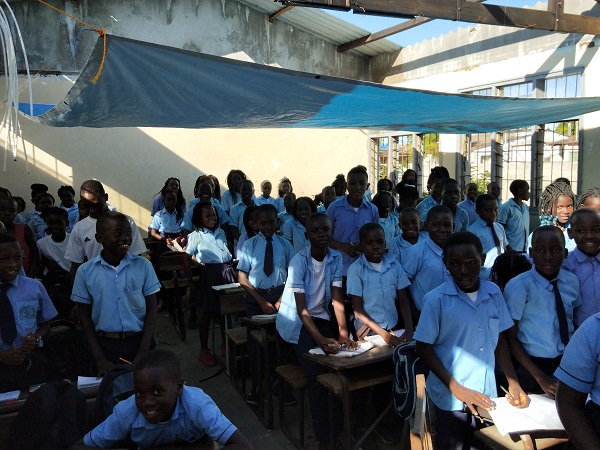
Macurungo Elementary School
Roofs were blown off by Cyclone Idai, May 2019.
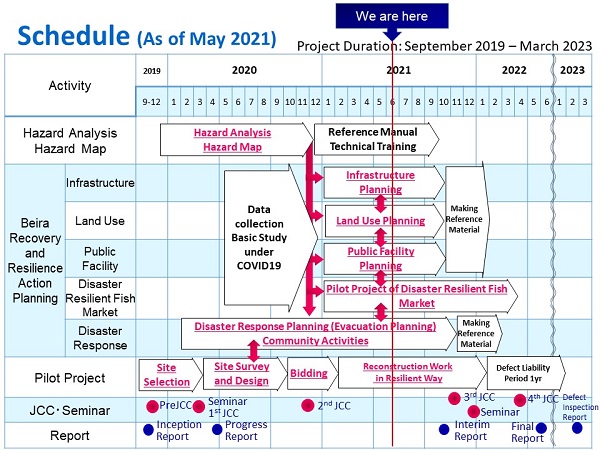
Project Schedule
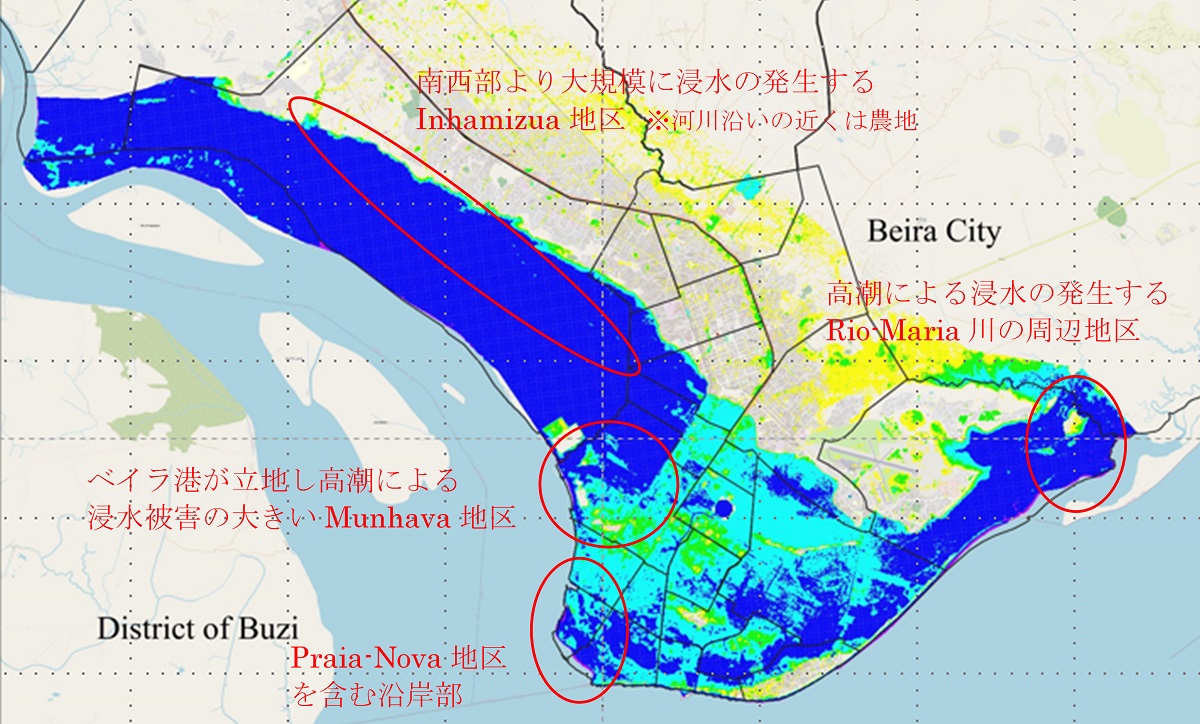
The Areas Targeted for Evacuation are Circled on the Storm Surge Hazard Map Created in this Project.
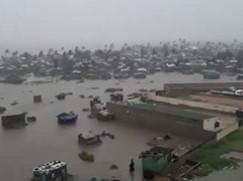
Innundated Coastal Area of Beira City hit by Cyclone Chalane, in January 2021
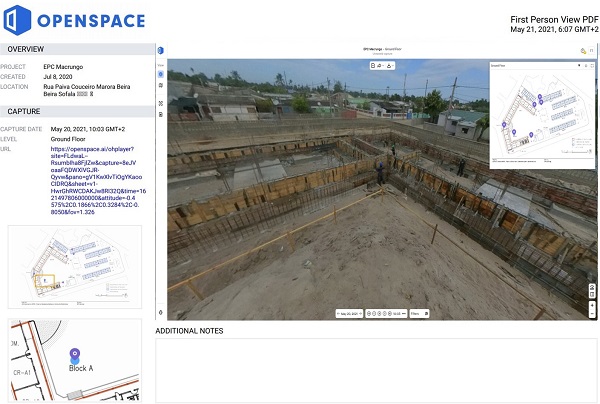
The 360-degree-pictures taken on site are filed on a cloud server with the records and shooting points. This enables the project team to grasp the situation easily.
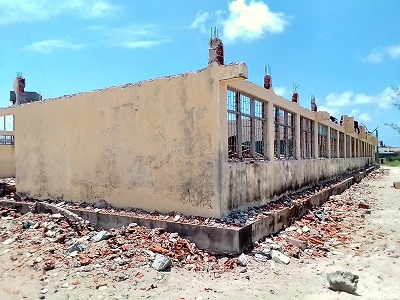
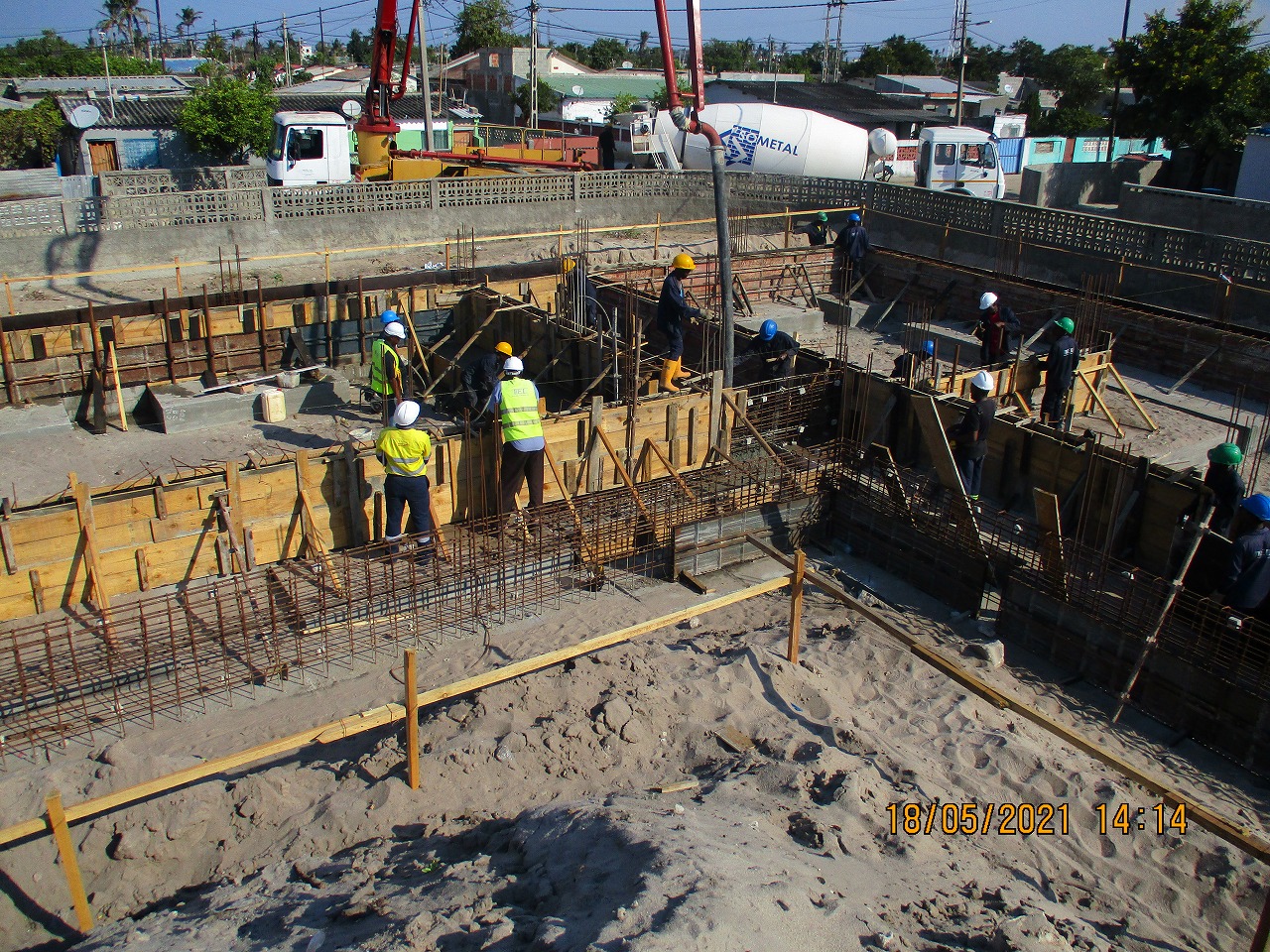
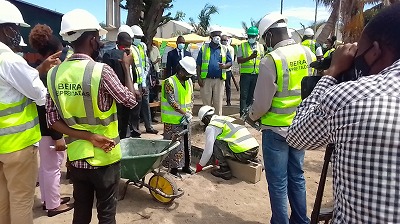
Recent Picture of Construction Work
【Reported by
Masaaki Chida, the Project Manager of the JICA Team, Project on Strengthening Resilience in Cyclone Idai Affected Areas (Project Manager, Global Company, Pacific Consultants Co., Ltd.)
Atsutoshi Hirabayashi, Technical Advisor, Infrastructure Management Department, Japan International Cooperation Agency (JICA)】
The Committee on Hybrid Structures
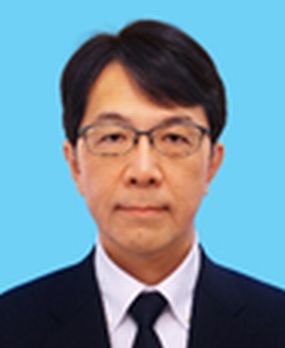
Takashi Matsumoto
(Chair, the Committee on Hybrid Structures)
The Committee on Hybrid Structures was established in 2005. It began life as the “Research Subcommittee on Steel-Concrete Sandwich Structures” of the Structural Engineering Committee established in 1978. Then, in 1994, the “Research Union on Steel-Concrete Sandwich Structures” was established as a joint subcommittee of the Concrete Committee, Structural Engineering Committee, and Committee on Steel Structures. Following the efforts of these committees and the development of the steel-concrete hybrid structures, the Committee on Hybrid Structures was established as a standing committee.
The last time the Committee’s efforts were introduced in IAC News was in 2016, but since then the Committee has built on its track record such as publishing it’s Hybrid Structure Series and Hybrid Structure Reports, holding symposiums regularly, publishing the JSCE Journal (Hybrid Structures), giving annual academic technical lectures and poster sessions, and the planning and running of research discussion conferences. Furthermore, the Committee celebrated its 10th anniversary in 2015, and in December 2016, the “The Path of the JSCE Hybrid Structure Committee 2005-2015” was put together and a 10th-anniversary ceremony and panel discussion were held.
Here I will introduce two recent efforts that the Committee is rolling out internationally.
The first is its website release of the English version of “Basic Theory and Design of Hybrid Structures” published by the Committee. This content was made available to the public in July 2019, and the cumulative number of downloads as of March 2021 is 473 (including multiple downloads by individual users). Based on recent records, the types of people who have downloaded the publication are as follows. Firstly, a breakdown of the purpose of use is Education/Learning = 66%, Research = 11%, Work = 15%, and Other = 8%. About two-thirds of the respondents answered that they would use the content for university-based education or were students or full-time employees using the content for self-study. The number of people downloading the publication for research purposes and work purposes was roughly equal, and there were responses from individuals at universities, private companies, and public institutions. By country, individuals from Japan accounted for 11% of the respondents, and individuals from overseas accounted for 89% of the respondents. Not all answers are necessarily accurate because it is possible to download the publication with simplified answers, but we were able to confirm that people of the 26 different countries shown in the table. After the release of the publication, we introduced its release through IABSE and fib, so we know for a fact that it was downloaded by people from all over the world.
This English version can be downloaded from the Committee's website by anyone who enters their name, affiliation, and purpose of use. As well as the English page (http://www.jsce.or.jp/committee/fukugou/e/filedownload.html), it is also available to download from the Japanese page (http://www.jsce.or.jp/committee/fukugou/downloadfiles.html). For those who are interested in using the publication, I encourage you to use either of the links.
The other recent effort of the Committee is engaging in technical exchanges with members of the Committee on Hybrid Structures living overseas. Although there are only a few committee members, there are some who have remained members of the Committee even after they have changed jobs from working in Japan to a job overseas. Utilizing the network of these people has given birth to opportunities for technical exchange between those in different countries. The Hybrid Structures Report Vol. 16 “Current Situation and Advanced Application Technology for Concrete-Filled Steel Tubes” published in 2021 contains case studies of concrete-filled steel tube arch bridges that have rapidly developed in China in the last 20 years or so. The aforementioned report is a survey report by a committee member living in China. China has the world’s largest span of concrete-filled steel tube arch bridges for through, half-through, and deck type bridges (430 m, 530 m, and 380 m, respectively). The report explains that technological innovations and technical regulations and design standards are being developed one after another while the number of cases where this technology is being applied is still on the rise. The exchange of technical information based on these differences in technological development in Japan and overseas is very important, and it is fair to say that this exchange is a product of the openness beyond country borders, which is one of the characteristics of the Committee on Hybrid Structures.
The Committee on Hybrid Structures published the Hybrid Structure Series 2 “Guidelines for Performance Verification of Steel-Concrete Hybrid Structures” in 2006, and introduced the Hybrid Structure Standard Specifications at the EASEC and the Japan-China-Korea Society of Civil Engineers Symposium. Although the latest version of the Hybrid Structure Standard Specifications is the 2014 version, it is currently in the process of being revised. I believe that the Committee needs to continue to improve the expansion of its international efforts that take advantage of the needs and opportunities that exist.
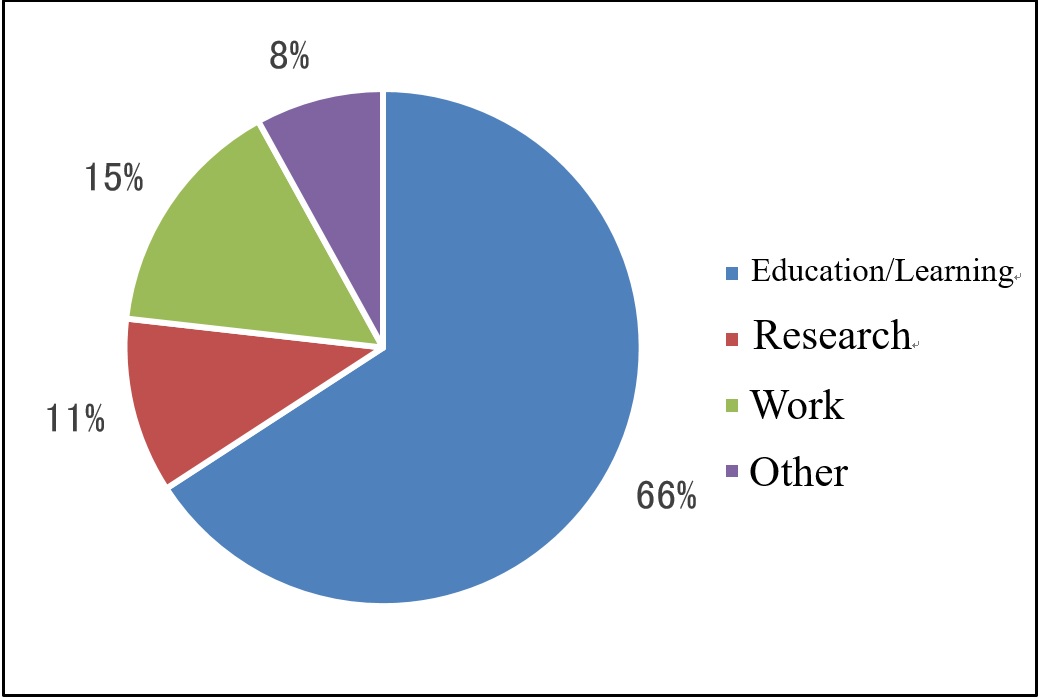 <
<
Purpose of Use (Classification by Author)
Country(Alphabetical order)
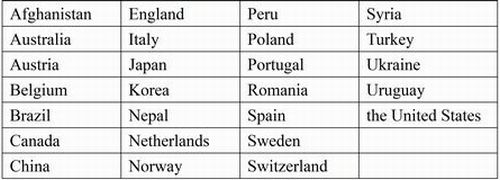
【Reported by Takashi Matsumoto, Chair, the Committee on Hybrid Structures (Hokkaido University)】
The Asian Civil Engineering Coordinating Council (ACECC) 40th Executive Committee Meeting in Taipei
1. Overview
ACECC is an organization established in September 1999 by civil engineering-related academic societies in the United States, Taiwan, South Korea, the Philippines, and Japan to improve and develop sustainable social capital in the Asian region. The Executive Committee Meeting (ECM), the highest-level decision-making body of the ACECC, is held twice a year by affiliated academic societies on a rotating basis. The 40th Executive Committee Meeting was held as an online meeting from March 25 to 27, 2021 under the facilitation of the Chinese Institute of Civil and Hydraulic Engineering (CICHE). The two photos below show the meeting in full flow. In addition to the Executive Committee Meeting, two seminars hosted by the Technical Committee and the Future Leaders Forum (FLF) were held at the same time.
2. Technical Coordination Committee Meeting: TCCM
(1) Reports on TC efforts
At the Technical Coordination Committee Meeting, reports were made on the efforts of nine Technical Committees (TCs) currently engaged in activities, and the contents of each effort were approved. Of the nine Technical Committees, TC21 (Technical Committee on Transdisciplinary Approach (TDA) for Building Societal Resilience to Disasters), for which JSCE is acting as the presidency holder, reported on the TC seminar held at the previous Manila ECM and the plan for efforts in anticipation of CECAR 9.
(2) Guidelines and Terms of Reference (TOR) for Technical Committees
In 2017, the ACECC Secretariat, with JSCE at its core, created the TC Guidelines. On this occasion, however, the Secretariat proposed the Terms of Reference, which gave more specific guidelines for efforts. While these Terms of Reference were generally accepted, it was decided that discussions would continue on the topic.
(3) Proposal to establish a new TC
The Philippine Institute of Civil Engineers (PICE) proposed the establishment of a TC that examines the future of infrastructure and proposes long-term strategies. It was decided that a TC entitled “Interdisciplinary Strategic Foresight for Infrastructure” will be established. Discussions still need to take place on the details of the new TC’s efforts, and JSCE will also lend a helping hand.
3. Planning Committee Meeting (PCM)
(1) MD-RSCE’s membership application
The Moscow Department of the Russian Society of Civil Engineering (MD-RSCE), which had requested to join the ACECC last time, participated as an observer. The membership of MD-RSCE was unanimously approved.
(2) About the ACECC Awards
CICHE showed the selection process of the ACECC Awards at CECAR 9, and it was approved. Domestic responses for recommendations from JSCE began in April. We hope for a large number of responses.
(3) About the forthcoming Executive Committee Meetings (41st and 42nd)
The forthcoming Executive Committee Meeting was scheduled to be hosted by the Federation of Myanmar Engineering Society (Fed. MES) in October 2021, but due to the unstable situation in Myanmar at this present time, the next Executive Committee Meeting will be hosted by ASCE. Fed. MES will host the 42nd Executive Committee Meeting, but if the current situation continues as it stands, another organization will host the meeting instead.
4. Executive Committee Meeting (ECM)
(1) TCCM and PCM approval
Although there were further discussions about the efforts of the Strategic Planning Meeting, the decisions made at the TCCM and PCM were accepted as they were for the other matters.
(2) Decision on which organization will host CECAR 10
The Korean Society of Civil Engineers (KSCE) and PICE had put themselves forward as potential hosts for CECAR 10 to be held in 2025. At this Executive Committee Meeting, both organizations gave presentations, and the representatives of affiliated academic societies voted as to which organization they thought should host CECAR 10. It was clear that both organizations were highly motivated to host CECAR and manage the secretariat, but KSCE, which had a more concrete plan, received the most votes. CECAR 10 is scheduled to be held during October 21-25, 2025 on Jeju Island in South Korea.
5. Conclusion
On this occasion, the Executive Committee Meeting was held online for the third time in its history. The meeting was run by taking advantage of the online format to hold many seminars in unison with the Executive Committee Meeting. I would like to pay tribute to those of CICHE who hosted the event. The 41st Executive Committee Meeting will be hosted, albeit at short notice, by ASCE in Washington D.C. during September 23-25, 2021. Organizations other than ASCE are planning to participate online as well as just like the 40th Meeting of the Executive Committee Meeting on this occasion.
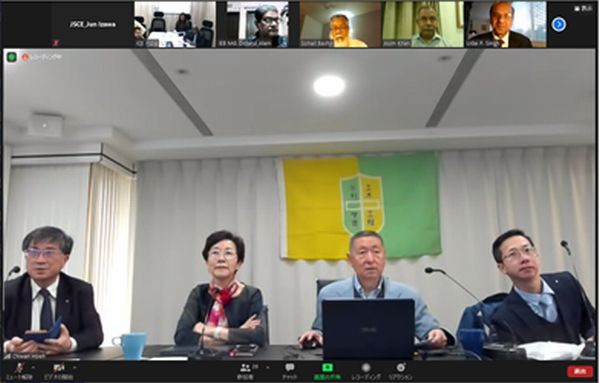
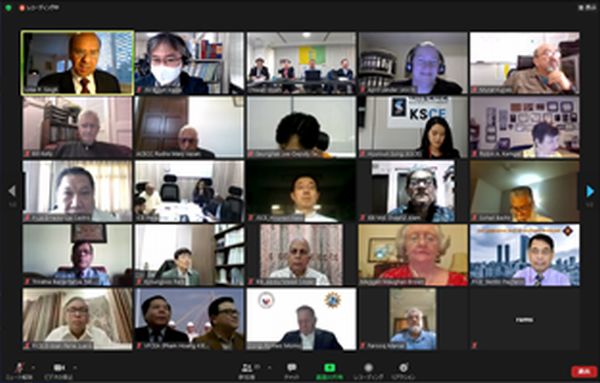
A Snapshot of the Meeting with CICHE Representatives Making Opening Remarks to Kick-off the ECM
Schedule of the 40th ECM

【Reported by Jun Izawa, Secretary-General, the Committee on ACECC (Railway Technical Research Institute)】
FY2020 JSCE Awards
Twenty-seven civil engineers including six non-Japanese engineers were recognized with International Lifetime Contribution Award, Continuing International Contribution Award, and International Outstanding Collaboration Award. The JSCE Award Ceremony was hold on June 11, 2021.The award recipients are listed in the table below. For further details, please visit http://www.jsce-int.org/a_t/international .
< International Lifetime Contribution Award: 5 recipients >
The Award recognizes (1) Japanese civil engineers for their significant contributions to the development of civil engineering technology and/or the infrastructure development through their professional practices in and outside Japan; (2) non-Japanese civil engineer(s) for his/her commendable achievements to the progress and promotion of Japanese civil engineering.
| NAME | AFFILIATION |
| Yoshihiro Akiyama | Japan International Consultants for Transportation Co., Ltd. |
| Koji Kuroda | Nippon Koei Co., Ltd. |
| Toshio Koike | Public Works Research Institute (PWRI) |
| Katsuji Hashiba | Infrastructure Development Institute |
| Ikuo Fujita | Fudo Tetra Corporation |
< Continuing International Contribution Award: 16 recipients >
The Award recognizes young professionals who have made and will make a significant contribution to the development of civil engineering and/or the development of infrastructure outside Japan with their unique and inspiring perspectives and solid technical skills.
| NAME | AFFILIATION | NAME | AFFILIATION |
| Makoto Ikawa | Dai Nippon Construction | Tetsuya Tanaka | TAISEI CORPORATION |
| Toshiyuki Izumi | PENTA-OCEAN CONSTRUCTION CO., LTD. | Saburo Tsuchida | Shimizu Corporation |
| Manabu Inoue | IHI Infrastructure Systems Co., Ltd. | Keisuke Machida | OBAYASHI CORPORATION |
| Yusuke Uchiyama | Kobe University | Yoshiyuki Matsui | Nippon Koei Co., Ltd. |
| Tetsuya Urakawa | TOBISHIMA CORPORATION | Masato Matsumoto | NEXCO-West USA, Inc. |
| Fumiaki Kiyosue | Oriental Consultants Global Co., Ltd. | Yoshiyuki Morikawa | National Institute of Maritime, Port and Aviation Technology |
| Kazumasa Sanui |
Japan International Cooperation Agency |
Yuchi Yamane |
Kansai Electric Power Co., Inc. |
| Kenichiro Tachi | World Bank | Taishi Yamamoto | Ministry of Land, Infrastructure, Transport and Tourism |
< International Outstanding Collaboration Award: 6 recipients >
The Award recognizes foreigners who have made contributions to the development of civil engineering in Japan or other countries, through the exchange and collaboration with Japan, and are expected to play an active role in the progress and development of civil engineering field.
| NAME | AFFILIATION |
| Lau Jeck Deng | Fujita Corporation |
| Mohsin Usman Qureshi | Head of Research & Development, Sohar University |
| Ng Kwok Wei | SATO KOGYO (S) PTE. LTD. |
| Robert P. Elano | TAISEI CORPORATION |
| Sreng Sokkheang Suzuki | Nippon Koei Co., Ltd. |
| Narentorn Yingyongrattanakul | Oriental Consultants Global Co., Ltd. |
Updates
- 7th “DOBOKU(Japanese)
https://committees.jsce.or.jp/kokusai/node/222 - 2nd JSCE Concrete Committee Webinar "Frontiers of Concrete Technology"
Aging Management of Concrete Structures in Nuclear Power Plants - Internal swelling reaction of concrete – (August 4) https://www.jsce-int.org/node/720 - Salon for International Students and Engineers in Japan
https://committees.jsce.or.jp/kokusai/node/220 - 【Abstract Deadline Extended: July 31】9th Civil Engineering Conference in the Asian Region (CECAR9) in Goa, India (Sept 21, 22, and 23, 2022) http://www.cecar9.com/
- Joint Japan-US Symposium on Assessment, Management, and Governance for Infrastructure Resilience
*Pre-recorded Presentation Available on the Website.https://www.infraresil.jp/event/01/ - The International Infrastructure Archives – A Compilation of Japan’s Greatest Projects in Transfer of Civil Engineering Technology in Service –http://www.jsce.or.jp/e/archive/
- ASCE Lifeline Conference 2021 2022 https://samueli.ucla.edu/lifelines2021/
- The 17th World Conference on Earthquake Engineering (17WCEE) http://www.17wcee.jp/index.html
- IAC YouTube Channel
https://youtube.com/channel/UCGIs6DHrzX_cGD-mHUrRlkA - 9th International Conference on Experimental Vibration Analysis for Civil Engineering Structures (EVACES2021) https://ec-intl.co.jp/evaces2021/
- IAC “News Pick Up!!” on the JSCE Japanese website
https://committees.jsce.or.jp/kokusai/iac_dayori_2021 - Summary of featured articles in JSCE Magazine Vol. 106, No.7, July 2021
http://www.jsce-int.org/pub/magazine - Journal of JSCE https://www.jstage.jst.go.jp/browse/journalofjsce
IAC News Subscription
The IAC News is one of the communication tools to share information and ideas with the members. We would like to invite you, your friends and colleagues to join the communication and to subscribe the IAC News. Please register online: (http://www.jsce-int.org/node/150). We look forward to meeting you.
